
Sam Hallas' Website
We'll first remove the line, handset and dial cords. Don't take the bottom nut off or the screw will fall out. I know because I did. When re-assembling the sequence of parts is, from the head end of the screw: solder tag (where fitted), washer, nut, 2 x washer, nut, 2 x washer, nut, etc. The cords go between the pairs of washers.
From now on Iíll only work on the Tele No 1/232 as the construction of the two models is identical.
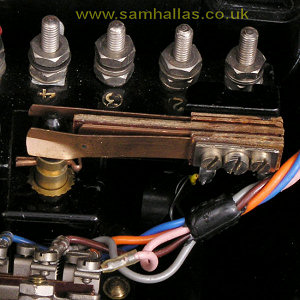
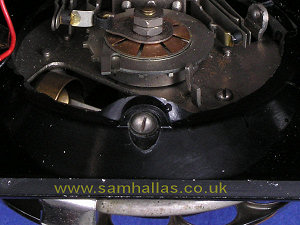
With the cord out of the way itís a good time to look at how the switch hook mechanism works. Itís very simple and robust. The cradle rest is bakelite and is moulded onto a brass extension which forms a plunger terminating in an insulated point (left). It is lifted upwards by a coil spring around the outside and held in place by a split pin. Simple and reliable.
As I described in the candlestick article, the dial, or blanking plate, is easily removed. Take the 6BA retaining screw (right) completely out. Turn the case so the dial is facing you, twist it slightly anti-clockwise and lift it away. I'll say no more about the dial as its maintenance is a subject in itself.

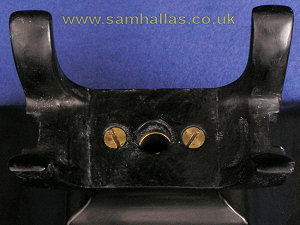
The next step is to remove the cradle rest and plunger assembly. Pull out the split pin (above, left) using a pair of long-nosed pliers and let the cradle rest drop out slowly so you can catch the spring and end cap.
It's probably best to remove the terminal block and transformer/ induction coil together in one go. So remove the two 6BA screws holding the transformer in place, turn the case over and release the 2BA terminal block fixing screws from the top (right). The screws on the 162 have been chemically blackened to make them less obvious, but these have no decorative coating.
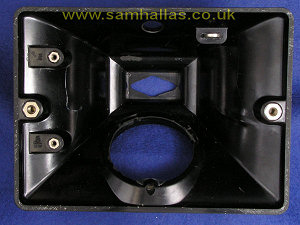
The main mouldings are now separated and empty ready for cleaning. Another advantage of Bakelite is visible on the main case. Itís the ability incorporate metal inserts in the moulding: the cord anchorage ring and the threaded nuts.
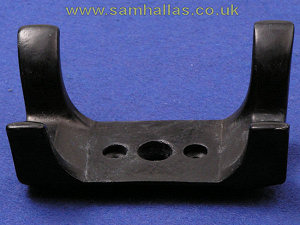
The cradle rest forks on the 1/232 are made of a different material from the Tele 162, which are Bakelite. This is a Cellulose Acetate material, which is more resistant to damage, but less resistant to temperature variation, humidity and other chemicals. The forks have suffered the ravages of time making the surface wrinkled in places as a result.
 Previous
Next
Previous
Next